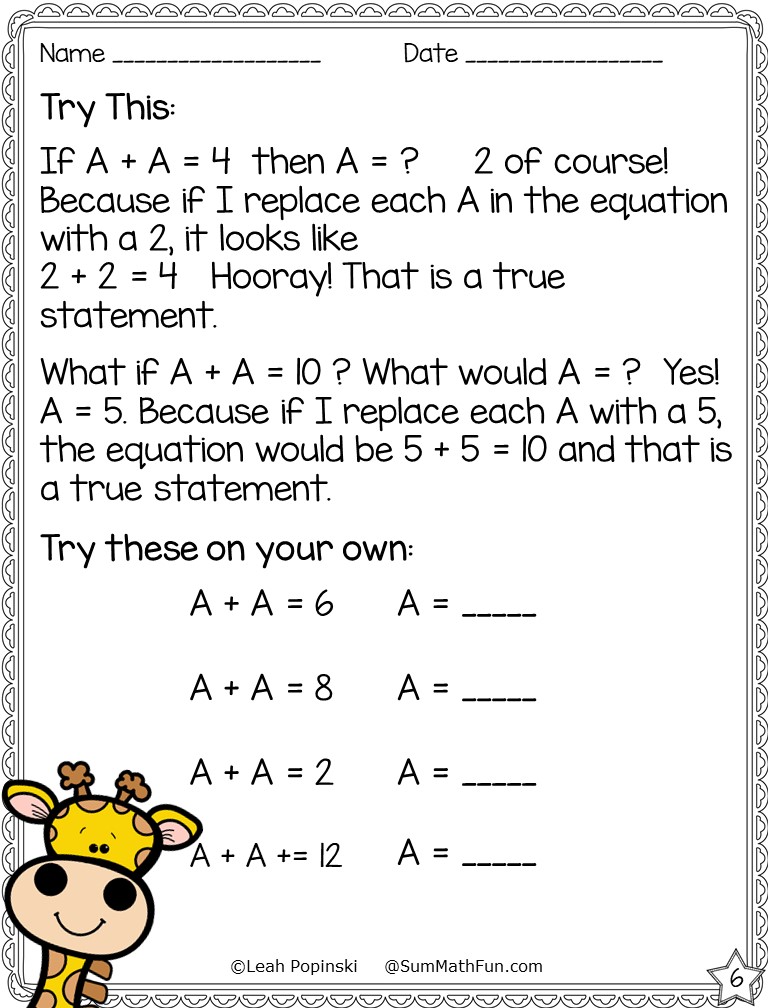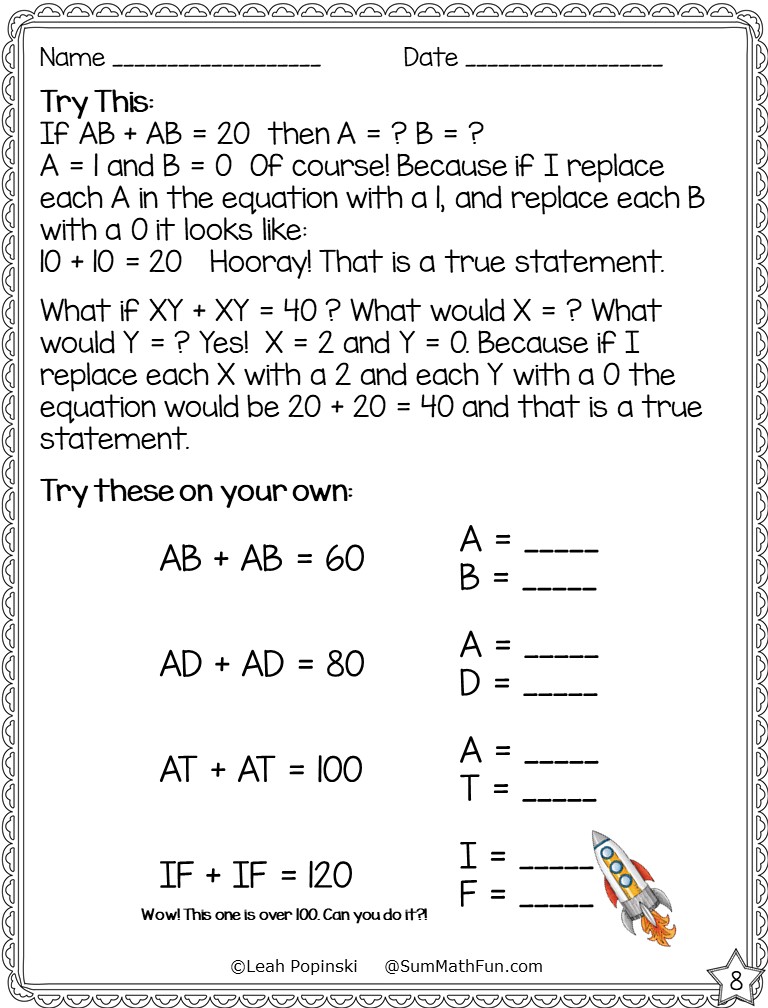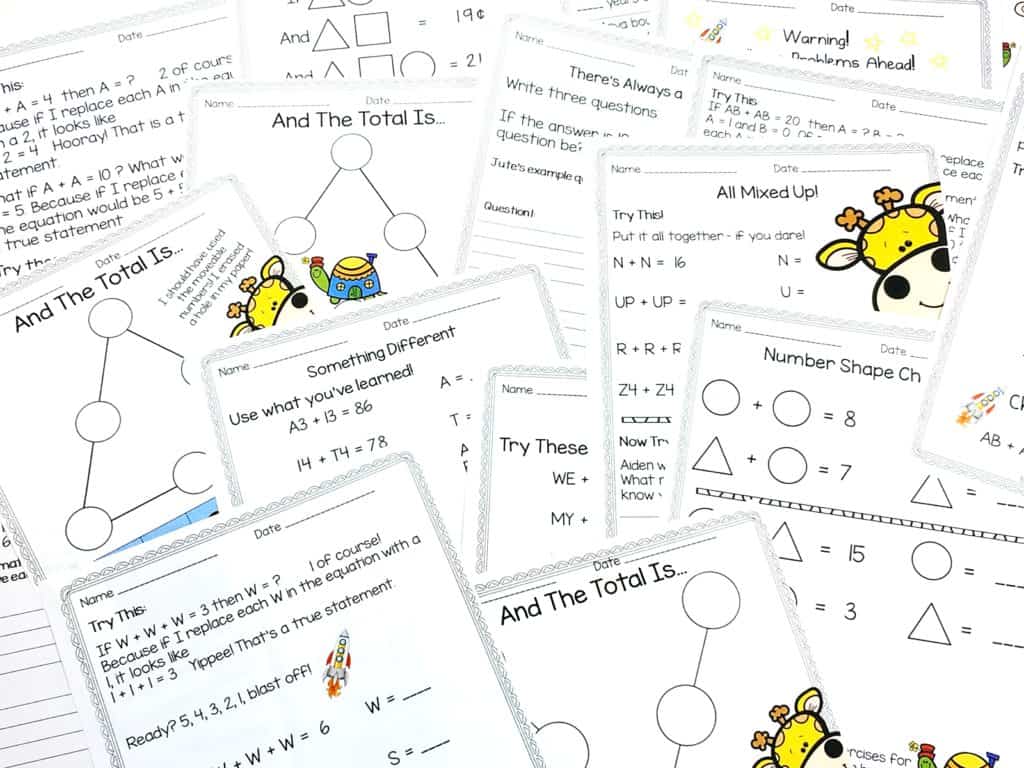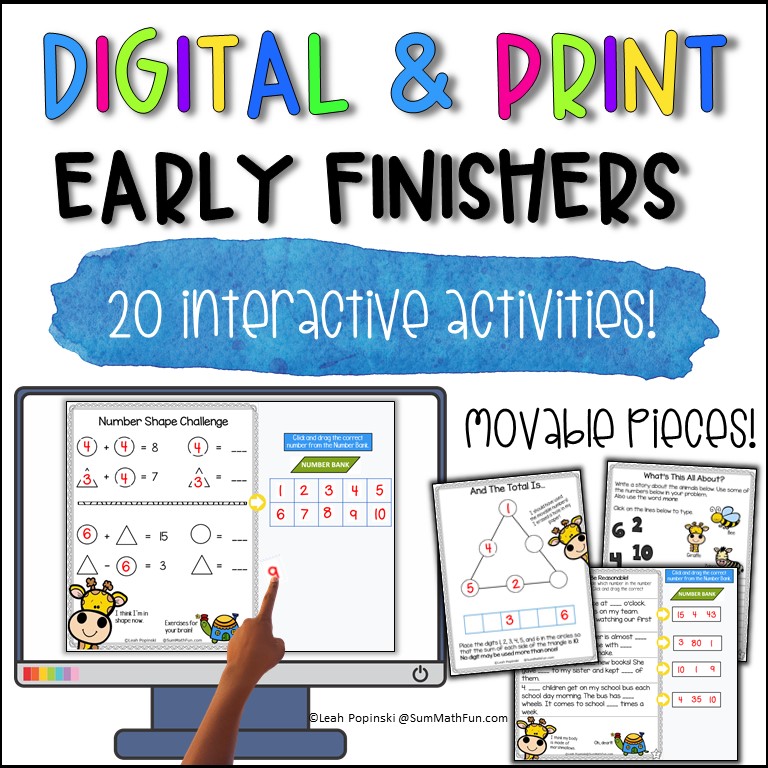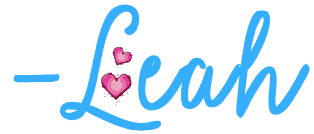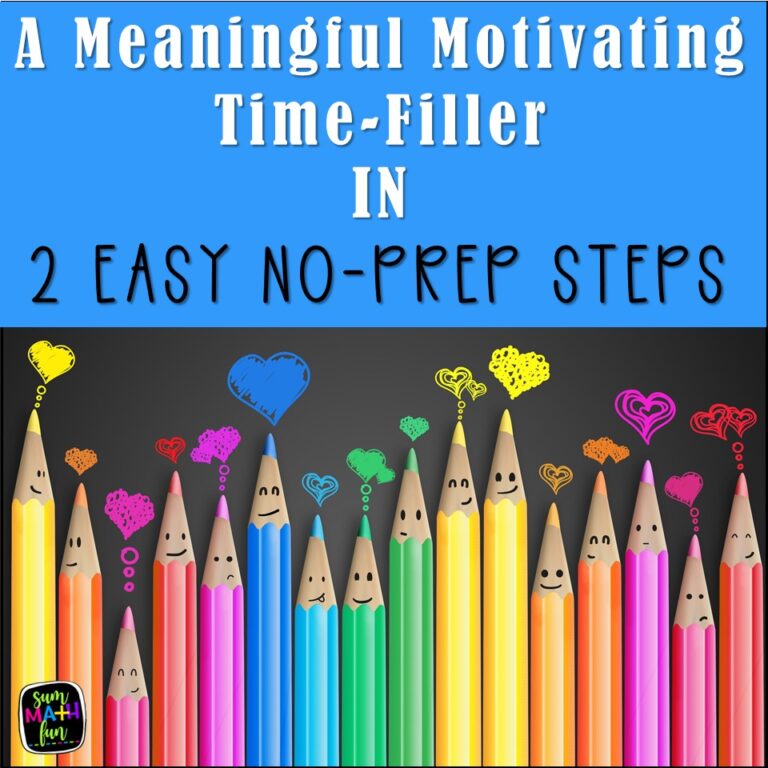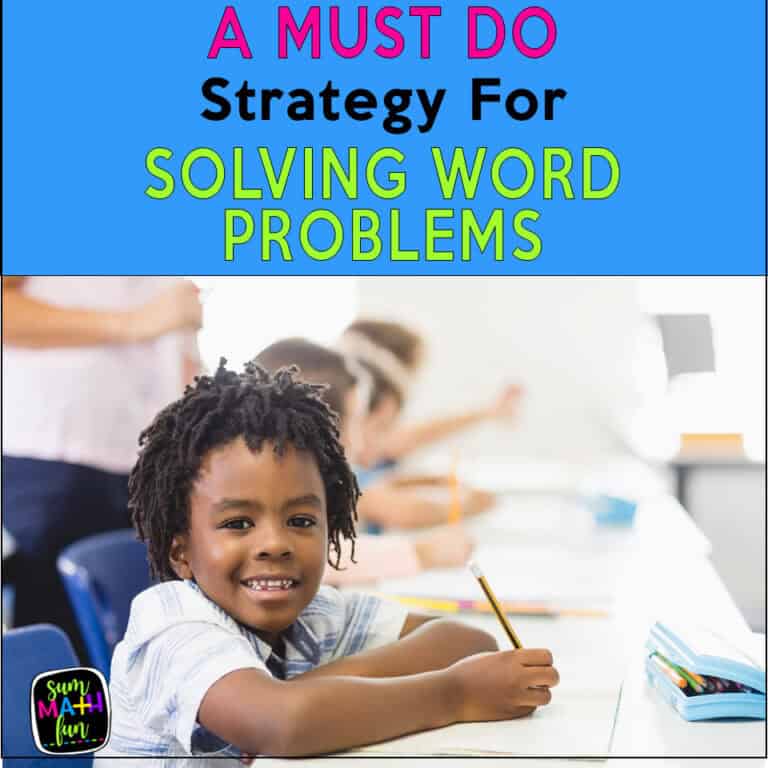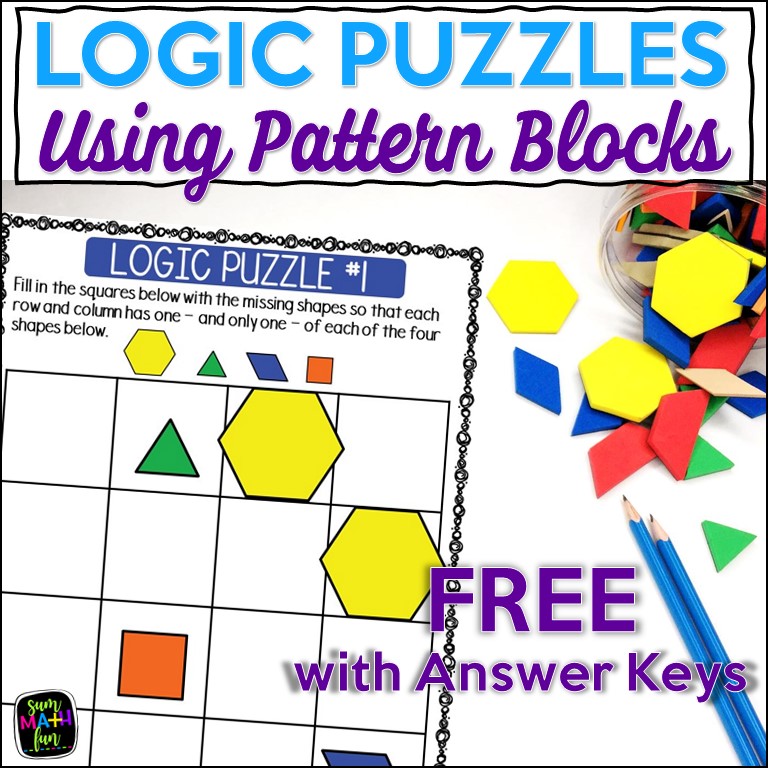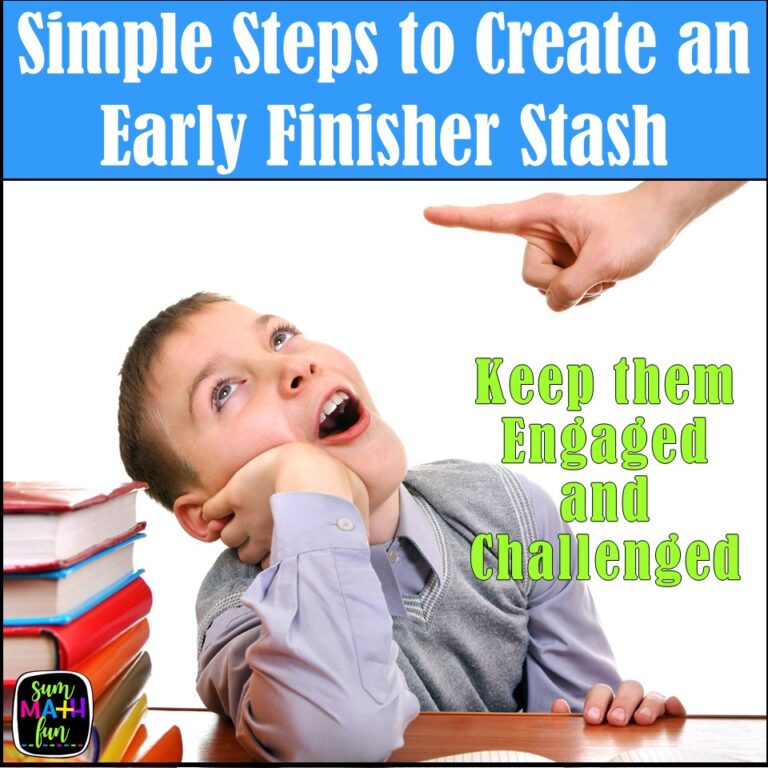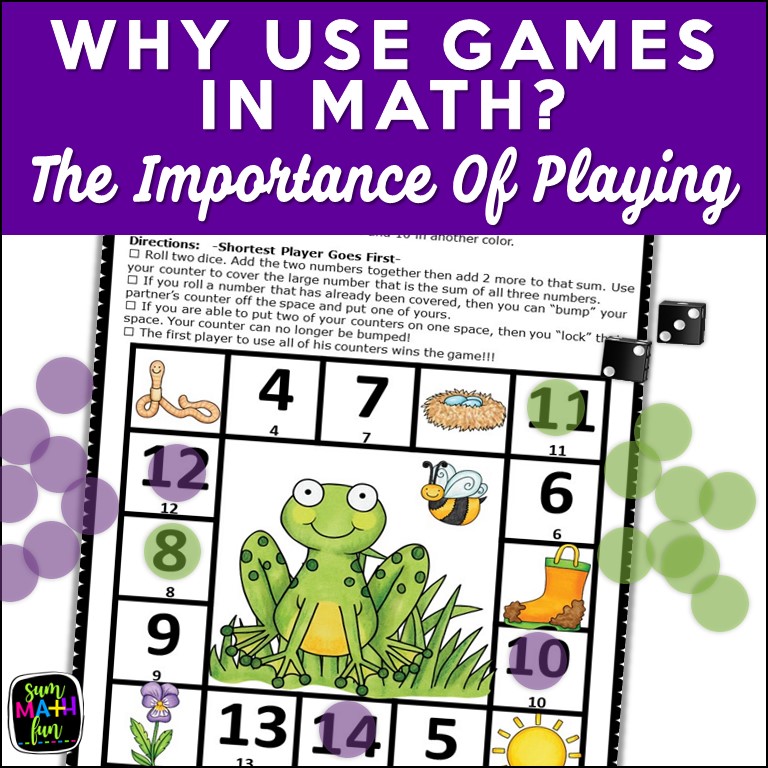Challenge Your Math High Achievers and See Their Creativity Thrive!
My second grade math high achievers were obvious. They finished everything not only quickly but also correctly. I was a beginning teacher and had no idea what to do with them. So they waited. Luckily they were all very well behaved – and bored. There were sooo many different levels of math students in my classroom. I knew I had to give my strugglers extra time.
What should I do with these math high achievers? The ones who learned and understood immediately. Although not yet diagnosed as gifted, they finished all of their work before I could finish passing out assignments.
Don’t worry. They will learn “anyway” I was told.
Just focus on your “needy kids”.
Have you heard these same words about your math high achievers?
There were so-o-o many needs. So-o-o many levels. I knew I was “losing” some of them. I had pushed those thoughts aside because the complexity of having resources for so many different levels was daunting.
Consequently, the way I was teaching didn’t feel right. I wanted more for my high achievers!
Therefore, I began to create.
Clearly, I needed materials that would:
- Enhance problem-solving and mathematical reasoning abilities
- Offer practice and maintenance of previously learned skills and concepts – even gifted students have “gaps” in learning
- Build literacy skills
- Nurture collaborative learning behaviors
Meeting the needs of all your students can be overwhelming. Who am I kidding? Meeting the needs of all your students IS overwhelming!
Students gifted in mathematical thinking and problem-solving need greater depth and breadth of topics and open-ended opportunities for solving more complex problems (Sheffield, 1994). True, of course. But in a classroom filled with diversity, meeting the needs of math high achievers who just seem to “get math” is . . . well . . . overwhelming!
I was also told to let them take out their library books and read when they finished their work. But I wanted them to be doing math during math time. I needed challenges that were ready-to-go.
To nurture and extend your young mathematicians, having fun, engaging, and challenging math extensions at your fingertips is a must!
So, to solve the need for rigorous challenges that would keep my 1st and 2nd grade math high achievers working and learning, I began creating my own.
▶ THIS IS ONE OF MY FAVORITES FOR FIRST, SECOND, AND THIRD GRADE GIFTED LEARNERS.
It broadens student thinking. Although it takes some time to introduce and then practice before students are independent with it, the thinking is excellent and so worth the time! And, once they understand the thinking, they will be applying it to many varied situations.
It involves replacing some numbers with letters-yes, it’s algebraic! Consequently, the problems involve more complex thinking and will thrill your math high achievers (and their parents)!
First, start with simple equations that students already know such as doubles.
1.Begin with doubles. Write A + A = 4 on your whiteboard.
2. Next ask students, “If A is a number, what number would it have to be? …2 of course. Because if I replace the letter A with the number 2, it will look like this 2 + 2 = 4″.
3. Then ask, “What does “A” equal in this problem: A + 7 = 10?”
4. Continue with a few more until students get the idea. Be creative. If something you write doesn’t work, let your students help you figure out why. Use subtraction as well as addition.
5. Finally, you can add in double-digit problems.
6. Make up a problem first. Any 2-digit problem will work. Just substitute letters for one of the addends, the subtrahend, or the minuend. At this point, always give the answer in numbers.
▶ HERE IS AN EXAMPLE OF HOW I INTRODUCE THE ACTIVITY:
- I think of a 2-digit problem and write it down in my own journal, on a sticky, or somewhere that I can refer to – there are a lot of distractions when teaching! Did she just take something very small out of her hair?!!
- I think and record the problem for myself. Let’s use 72 – 10 = 62 as an example. Make it as simple or as challenging as you need to meet the needs of your students.
- For the students’ problem, I write:
72 – AB = 62
A =_____ B = _____
Each letter in your problem will represent a different digit. If you use AA or BB, that signifies that the number has two digits that are the same.
For example: 58 – 33 = 25
The students’ problem would be 58 – AA = 25 and A = 3.
Post a few of these problems for your young mathematicians to solve when they finish early, for morning work, or during any other “spare moments”.
Last but not least, have students who can pose their own problems, write problems on index cards, and sign their names at the bottom of the card.
▶ PLACE THESE IN A MATH CENTER
If you do not use centers in your classroom, punch a hole in each index card, put a ring through it and hang the cards from a command hook.
You now have many new activities for your early finishers. And, they were created by your students! Your early finisher “stash” will grow with no effort or time from you!! Fabulous!
Below is a resource created using this idea. It will work for grades K-3 depending on how advanced your math high achievers are. It has pictures and examples for your students and 20 ready-to-go pages that include 57 challenges in digital and print!
The two characters throughout the tasks add humor and engagement. Plus they encourage your students to persevere with renewed effort and confidence as they work through the tasks.
You can try out the free version by subscribing below. These challenges will definitely get the thinking started!
Give your 1st, 2nd, and 3rd grade math high achievers the challenges they crave with our rigorous early finishers tasks! Our math challenges and math extensions are perfect for promoting critical thinking and critical problem-solving skills in your classroom. With these activities, your brightest students won’t be trying to stay busy to avoid behaving negatively – they’ll be learning, thinking, and growing.
Let me know how the tasks work for you. Share any tips or suggestions you have in the comments below. I’d love to hear your math early finisher tips.


